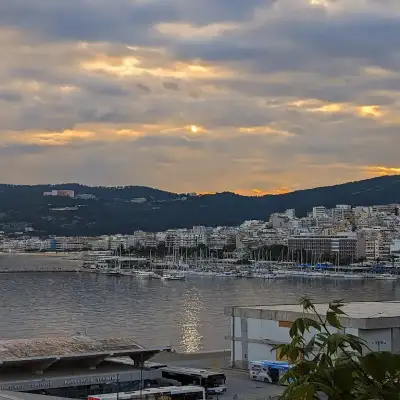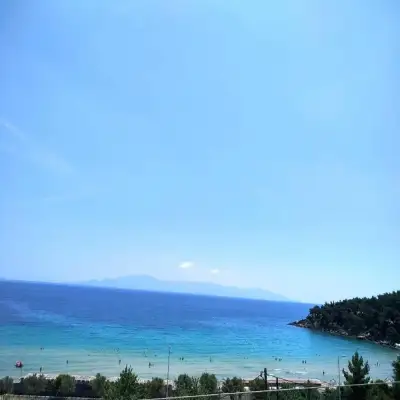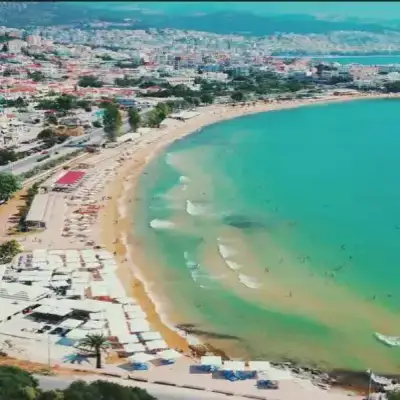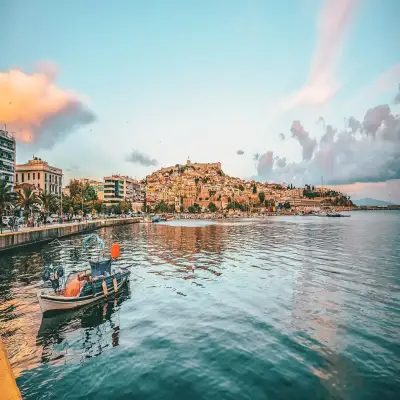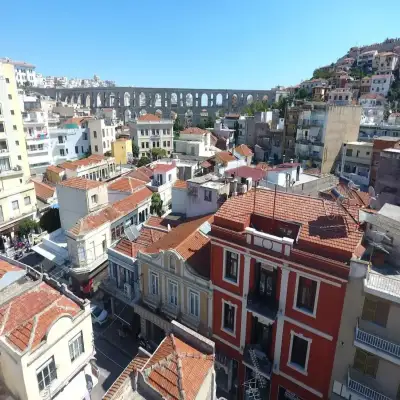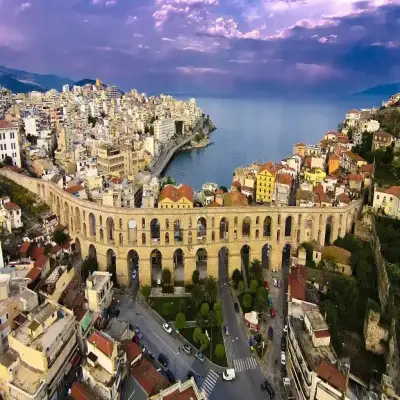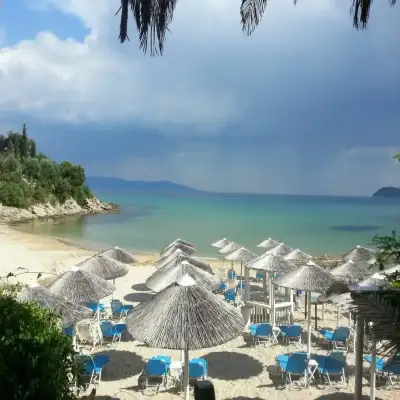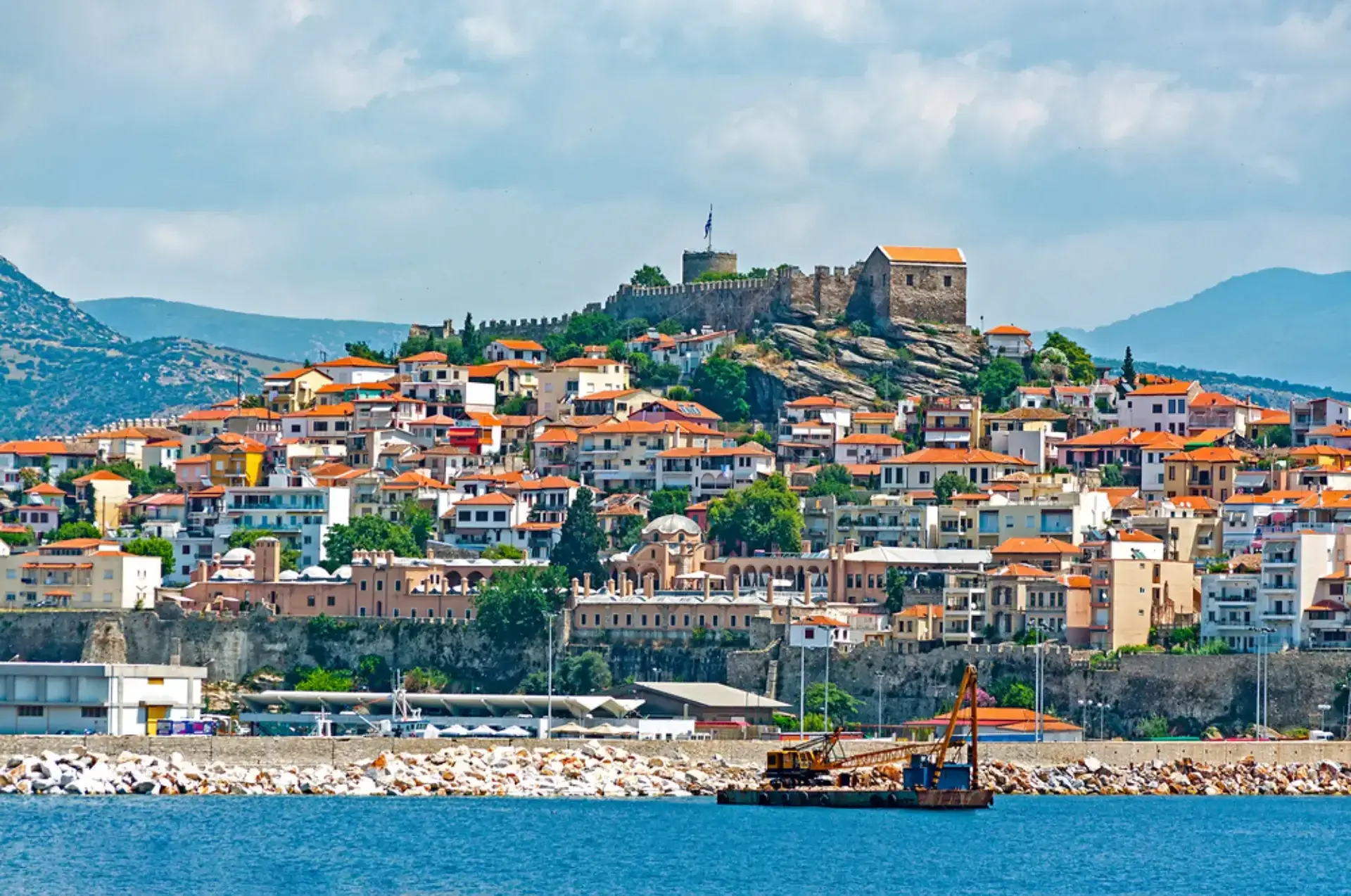
Small & Boutique Hotels in Kavala
In the north of Greece, nestled against the Aegean coast, there is a modest city full of history and peace: Kavala. It's surprising that it's so close to Turkey and yet so few people have discovered it. With its stone streets adorned with Ottoman traces, deep blue sea, quiet coastal walks, delicious seafood and friendly people, Kavala deserves to be on your travel list like a friendly breathing break. It is neither too crowded nor too touristy. When you step here, it's as if you start living in a city rather than visiting it. And Kavala likes to tell itself slowly, without rushing.
Places to visit in Kavala
Old Town Panagia: Kavala's oldest settlement, Panagia is like an open-air museum. Ottoman architecture adorned with bay windows, narrow stone streets, tiny courtyards, and bougainvillea-lined staircases... The slopes can be a bit tiring, but the views at every step are well worth it. Kavala Castle is a historical building that embraces the whole city from the top of Panagia. St. Nikolai Church (converted from an old mosque), Halil Bey Mosque and the Church of Virgin Mary make you feel the cultural mosaic of the region.
Traces of Mehmet Ali Pasha of Kavala: It is possible to see a trace of the Ottoman Empire every step of the way in Kavala, but one of the most impressive buildings is undoubtedly the house where the Egyptian Governor Kavali Mehmet Ali Pasha was born. Today used as a museum, the building draws you in with its architecture and unique view. The bronze statue next to it shows the respect of the people of the region for the Pasha. Even coming here and sitting quietly for a few minutes feels like connecting with the past.
Imaret: Built by Mehmet Ali Pasha in the 1800s, the Imaret is an important building that shows how strong social solidarity was in the Ottoman Empire. It served as a soup kitchen, madrasah and masjid in its time. Today, it has been restored and turned into one of the most elegant hotels in the city. It is a pleasure to visit from the outside, but if you have the opportunity, it is another experience to have a cup of tea inside and experience the historical atmosphere to the fullest.
Kavala's City Center and Beach: The city center is a beautiful mix of old and new. Walking along the coastline in the shade of the palm trees, watching the fishing boats or sitting in a cafe sipping a freddo espresso will soothe your soul. The Tobacco Museum on the beach is a fascinating insight into Kavala's past economic power. The municipality building stands out with its aesthetic architecture from the 19th century, while the evening markets along the seafront are full of handicrafts and local delicacies.
Aqueduct (Kamares): Dating back to Roman times and enlarged by Suleiman the Magnificent during the Ottoman period, the 60-eyed aqueduct is one of the most striking parts of Kavala's skyline. This magnificent structure, which almost divides the city in two, continues to live today as a symbol reflecting the spirit of the city.
Filippi Ancient City: Located 15 kilometers from Kavala, the Filippi Archaeological Site is a must-see for history buffs. Full of ancient theaters, basilicas and Byzantine ruins, this area is also very important in terms of Christian history. It is believed that St. Paul preached the first sermon in Europe here. Concerts and theater events held here in the summer also enrich your experience.
Thassos Island: Only 40 minutes by ferry from Kavala, Thassos Island is a paradise with its sparkling sea, white beaches and delicious cuisine. Swimming, walking in the coastal towns and tasting seafood in traditional tavernas can be one of the most memorable moments of your trip to Kavala. Golden Beach and Aliki Beach are especially popular with nature lovers.
Where and What to Eat in Kavala?
Kavala is an Aegean city with its fresh seafood. You should definitely try scallops, grilled octopus, calamari and mussels in the coastal restaurants. Let the locally produced wines accompany your meal. For dessert, Kavala cookies; this iconic flavor with almonds and plenty of powdered sugar both sweetens your mouth and makes a nice gift option.
How to get to Kavala?
Since there are no direct flights from Turkey to Kavala, transportation requires some planning. The most practical option is to take a bus from Istanbul to Thessaloniki and then rent a car from there to reach Kavala in about 2 hours. Another route is via Athens... It is also possible to reach Kavala from islands such as Lesbos and Limni by ferry.


